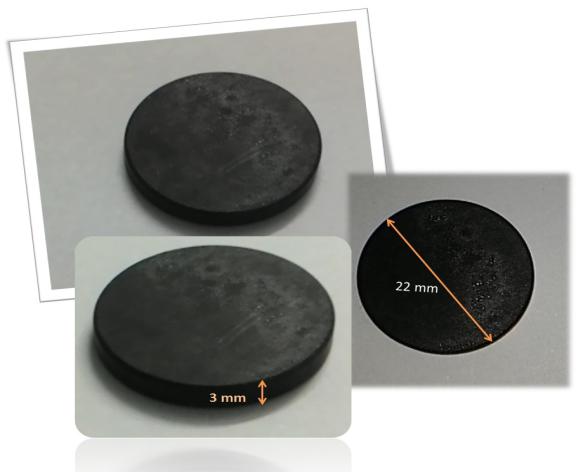
- •A PROJECT ON
- •ASANSOL ENGINEERING COLLEGE
- •ABSTRACT
- •INTRODUCTION
- •PRECONCEPTS
- •PARAMAGNETISM
- •PROJECT DESCRIPTION
- •Here we are moving ahead with our project work.
- •Explanation of Meissner Effect:
- •FINDING OUT A SUITABLE SUPERCONDUCTOR
- •USING LIQUID NITROGEN FOR COOLING OUR SUPERCONDUCTER
- •CONSTRUCTION OF THE TRACK
- •USE OF PERMANENT MAGNETS TO BUID THE TRACK
- ••We have used these magnets to prepare track length of about ½ m
- •CONSTRUCTION OF MODEL SIMULATING A LOCOMOTIVE
- •TEST RUN OF OUR SUPERCONDUCTING TRAIN
- •Procedure Followed:
- ••A sheet is kept between locomotive and track prior to pouring of liquid
- ••Now liquid nitrogen is poured in the cavity of our model of the
- ••The YBCO crystal is allowed to cool for sometimes. Now after the crystal
- ••Then we removed the sheet between crystal and the magnetic track.
- •• Then we found that we were able to levitate the crystal some
- ••We tried to propel it with a little push of our fingers (here
- •WORKING PRINCIPLE
- •ADVANTAGES OF MAGNETICALLY LEVITETED TRAINS
- •OBSERVATIONS
- •CONCLUSION
- •ASSUMPTIONS & LIMITATIONS
- •SCOPE OF FUTURE WORK

A PROJECT ON
LIVE MODEL OF SUPERCONDUCTING MAGLEV

ASANSOL ENGINEERING COLLEGE
Kanyapur, Asansol -713305
Department of Mechanical Engineering
In Association with Andal Diesel Shed (Eastern Railway)
Submitted in Partial Fulfillment of the Requirement for the Award of
B.Tech in Mechanical Engineering
Of
West Bengal of University of Technology
Project Report On
‘LIVE MODEL OF SUPERCONDUCTING MAGLEV’
Developed By:
Anand Kumar |
(10800711007) |
Bipresh Mani |
(10800711023) |
Chandan Pal |
(10800711025) |
Dhirendra Kumar |
(10800711029) |
Raviranjan Kumar |
(10800711071) |
ABSTRACT
We are here using Meissner effect instead of traditional electromagnetic concept to demonstrate how we can build a levitated frictionless train. We have used permanent magnets to build the track of our train and a model of train coaches consists of a superconductor. The superconductor when cooled below the critical point levitates in presence of the magnetic fields of the permanent magnets of the track. In this way our train runs some distance above the track. In that way we might be able to totally remove the problem of friction.
The Superconducting Magnetic Levitation option is a very real possibility but there are limitations also which need to be addressed properly. Before any meaningful prototypes can be built there will need to be a substantial investment in research and development. We are convinced that we are on the verge of an era where creative new maglev ideas will revolutionize transportation technology.
INTRODUCTION
India is currently using conventional rails as one of its most important transport system for passengers as well as freights. But it is becoming obsolete nowadays because of many difficulties and limitations:
•lower top speeds, significant guide way maintenance, maintenance schedules are based on speed or distance travelled, affected by snow, ice, severe cold, rain and high winds, experience rolling resistance, and air resistance potentially decreasing power efficiency, produce larger noise, wear and tear from friction of the wheels, equipment deterioration from hammer.
In present scenario, magnetically levitated (Maglev) trains have the potential to replace the existing rail transport system. Many countries are spending a lot on the R & D work of these types of future trains.
There are two types of maglev trains developed till now. They are:
• |
Transrapid |
- |
It is a German high speed monorail train. |
|
• |
Chuo-Shinkansen |
- |
It is planned Japanese maglev train designed |
|
|
ultimately connect Tokyo, Nagoya and Osaka. |
|||
PRECONCEPTS
QUANTUM LEVITATION
Quantum levitation is a process where the properties of quantum physics are used to levitate an object (a superconductor) over a magnetic source.
FLUX PINNING
Flux pinning is a phenomenon in which the magnetic flux becomes locked or "pinned" inside a superconductor.
MEISSNER EFFECT
The Meissner effect is the expulsion of a magnetic field from a super conductor during its transition to the super conducting stage at or below its critical temperature.
SUPERCURRENTS
When a superconductor at its critical temperature is exposed to a magnetic field, supercurrents are induced within it.

PARAMAGNETISM
Para magnetism is a form of magnetism whereby certain materials are attracted by an externally applied magnetic field and form an internal induced magnetic field in the direction of the applied magnetic fields.
FERROMAGNETISM
It is a basic mechanism by which certain materials form permanent magnets or attract two magnets.
SUPERCONDUCTIVITY
Superconductivity is a phenomenon of exactly zero electrical resistance and expulsion of magnetic fields occurring in certain materials when cooled below a characteristic critical temperature.

PROJECT DESCRIPTION
Here we are moving ahead with our project work.
As stated before we will be using the Meissner effect instead of traditional electromagnetic concept to demonstrate how we can build a levitated frictionless train.
We will not be using any electromagnets or any other source of power to levitate our train, and to propel it.
We have used permanent magnets to build the track for our train and a model of train coaches consists of a superconductor crystal.
The superconductor, when cooled below the critical point, levitates in presence of the magnetic fields of the permanent magnets of the track.
The reason this works is something called the Meissner effect and magnetic flux pinning.

Explanation of Meissner Effect:

FINDING OUT A SUITABLE SUPERCONDUCTOR
A superconductor is an element, inter-metallic alloy, or compound that will conduct electricity without resistance below a certain temperature.
We choose to use an YBCO crystal for our purpose. YBCO stands for “Yttrium Barium Copper Oxide”. It is good for displaying high temperature superconductivity.
(Its critical temperature is at about 90K).
The YBCO Crystal disc is of diameter 22mm and height 3mm.
